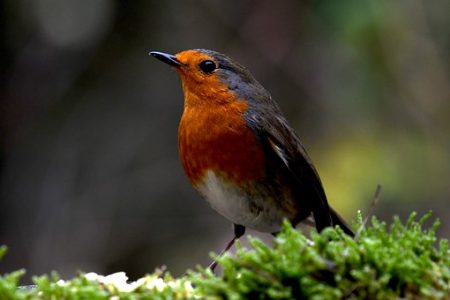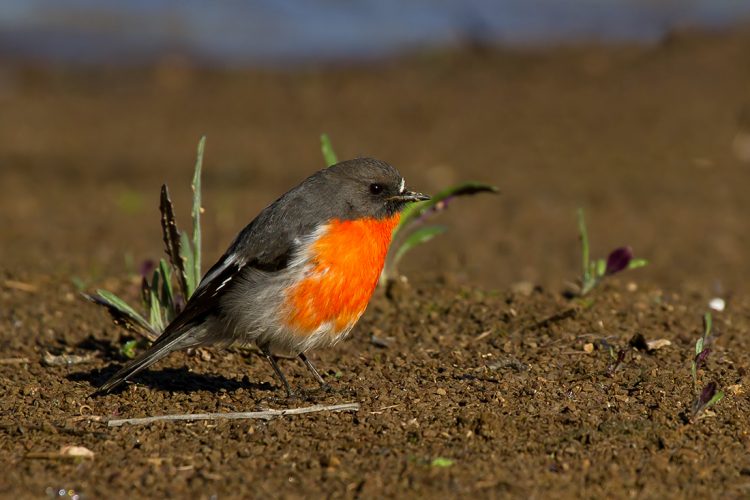Flame Robin is a small common passerine bird native to the coolest part of Australia. The frequency at which this species has been observed has declined substantially at the edges of its non-breeding range, but overall density has probably not yet halved, so it is not near-threatened. The Flame Robin has suffered a marked decline in the past 25 years. The other two red-breasted robins are scarlet robins and red-capped robins. A small 12 to 14-cm robin is sexually dimorphic.
Like all Australasian robins, the flame robin mainly eats insects, with a higher proportion of flying insects, and often returns to a favorite low perch several times to stand erect and motionless, scanning the leaf litter for more prey. Flame Robin consumed beetles, wasps, ants, flies, bugs, and caterpillars.
Other invertebrates eaten include spiders, millipedes, and earthworms. The pallid cuckoo and fan-tailed cuckoo are often brood parasites of the flame robin. Female cuckoos often lay their eggs in flame robin nests, which are then raised by the robins as their own
The flame robin (Petroica phoenicea) is mainly insectivorous, jumping on prey from a perch in a tree or foraging on the ground. South-eastern Australia breeds throughout Tasmania on the Bass Strait Islands and hilly country throughout southern and north-eastern Victoria, along with Great Dividing Ra.
Learn How To Quickly Build Affordable, Attractive & Long-lasting Backyard Chicken Coops.
In eastern New South Wales and south-eastern Queensland, as far north as 30°S. Non-breeding distribution: dispersing across lowlands and coastal areas, reaching the York Peninsula, Kangaroo, New South Wales/Queensland border, and inland slopes of Great Dividing Range. Some birds are also migrating across the Bass Strait from Tasmania. The territorial bird employs song and plumage displays to mark out and defend its territory.
Present range and abundance as above, but now scarce in South Australia and less common in the Victorian lowlands. This beautiful red robin remains common in Tasmania and the high country of Great Dividing Ra. Probably always scarce near Armidale, N.S.W. In the spring and summer breeding seasons, they are typically seen in pairs or in loose companies. There is no big difference in foraging behavior between male and female robins. They have been seen in mixed-species flocks with other small insectivorous passerines, such as scarlet robins, hooded robins, white-fronted chats, and Australasian pipits.
Flame Robins breed in eucalypt forests and woodlands, where there is access to open areas. Habitats include subalpine woodland, recently burned forest, recently logged forest, and pine plantations. In winter, the robins feed mainly in extensive open areas such as pasture, using orchards, and remnant native vegetation for shelter and roosting.
Threats: Flame Robins are most likely to have declined because of clearing, cultivation, and other degradation of non-breeding habitats away from the uplands where they breed. The area suitable for breeding at any one time has probably increased as a result of clear-felling for timber production.
Unique Parrot Training Ebooks – Stop Your Parrot From Biting, Train Tricks, Speech & More
The latest reductions in clear-felling may again reduce this area, although re-growth renders such areas unsuitable within five years of cutting. High rates of nest loss may be exacerbated by an increase in predation by Pied Currawongs Streperagraculina, eastern brown snake, grey shrike thrush, and feeding habitat in open woodland may be detrimentally affected by grazing and other woodland degradation.
Other Facts:
-
Flame Robin Family: Petroicidae
-
Scientific Name: Petroica phoenicea Gould, 1837
-
Common Name: Flame Robin
-
Conservation Status: Least Concern
Read More: Ruddy Kingfisher! A Perfect Photogenic Bird










